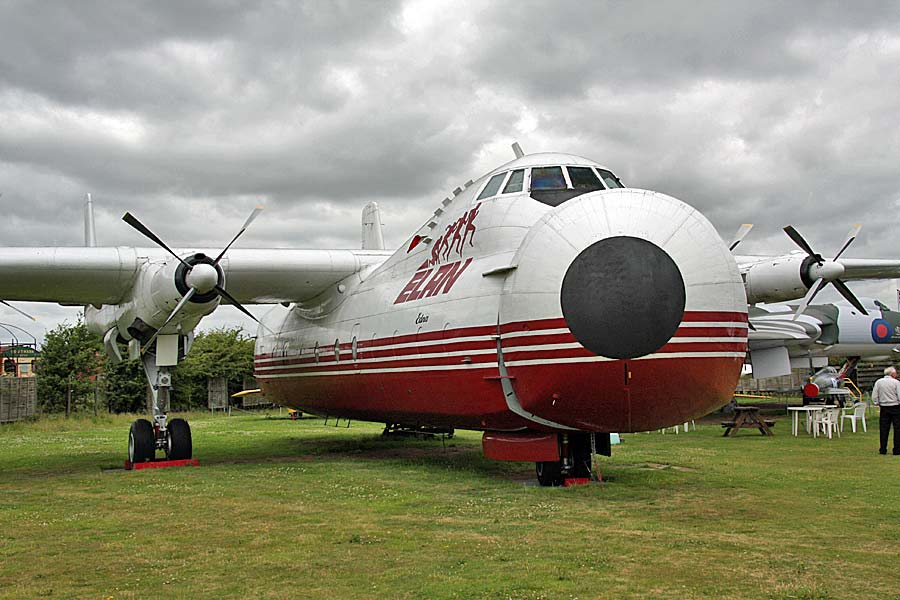


Armstrong-Whitworth Argosy 101 (G-APRL) [@ Midland Air Museum]
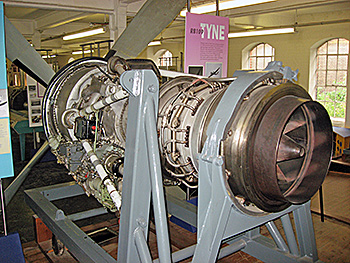 First designed by Armstrong-Whitworth
to meet a 1955 British Air Ministry specification for a freight/passenger
aircraft suitable for civil and military use. The civilian design being
designated AW.65 with the military option being AW.66. Initially known as the
Freightliner, construction started as a private venture in early 1957. This was
the manufacturer's last project as in 1958 the company was subsumed by the Hawker-Siddeley
group and the aircraft project was designated the Argosy. The prototype Series 100 freighter was first flown on
8th January1959. The
aircraft was displayed in Paris in July 1959 and Farnborough in 1960 where it
attracted interest but few orders. The project was not successful in the
commercial sector as only ten were built. Riddle
Airlines of Miami Florida ordered four aircraft, later increasing that to seven
for a contract with the USAF, as 101s. The three remaining Series 100 aircraft
were sold to BEA as 102s. The Argosy was powered by
four Rolls Royce Dart 526 turboprop engines
[photograph - right] driving Rotol four-blade propellers
and could carry a payload of 12,700 kg at a cruising speed of 390 Km/h over a
range of 5550 Km. It could also carry 65 passengers and in fact a
latter variant was fitted with a pressurised passenger capsule and operated by
SAFE Air in New Zealand as the main link between the Chatham Islands and the
mainland.
The last such flight was made in 1990 and the aircraft, a Series 200, is now
preserved at Woodbourne, Near Blenheim, South Island, New Zealand.
First designed by Armstrong-Whitworth
to meet a 1955 British Air Ministry specification for a freight/passenger
aircraft suitable for civil and military use. The civilian design being
designated AW.65 with the military option being AW.66. Initially known as the
Freightliner, construction started as a private venture in early 1957. This was
the manufacturer's last project as in 1958 the company was subsumed by the Hawker-Siddeley
group and the aircraft project was designated the Argosy. The prototype Series 100 freighter was first flown on
8th January1959. The
aircraft was displayed in Paris in July 1959 and Farnborough in 1960 where it
attracted interest but few orders. The project was not successful in the
commercial sector as only ten were built. Riddle
Airlines of Miami Florida ordered four aircraft, later increasing that to seven
for a contract with the USAF, as 101s. The three remaining Series 100 aircraft
were sold to BEA as 102s. The Argosy was powered by
four Rolls Royce Dart 526 turboprop engines
[photograph - right] driving Rotol four-blade propellers
and could carry a payload of 12,700 kg at a cruising speed of 390 Km/h over a
range of 5550 Km. It could also carry 65 passengers and in fact a
latter variant was fitted with a pressurised passenger capsule and operated by
SAFE Air in New Zealand as the main link between the Chatham Islands and the
mainland.
The last such flight was made in 1990 and the aircraft, a Series 200, is now
preserved at Woodbourne, Near Blenheim, South Island, New Zealand.
G-APRL was the second Argosy to fly on 14th March 1959 and was used at one point to test the beaver tail design of the AW.66 before being returned to AW.65 configuration. Sold on 24th August 1961 to Riddle Airlines, October 1962 to Capitol Airlines, 30th July 1964 to Zantop Air Transport and in September 1968 to Universal Airlines. G-APRL returned to the UK with Shackelton Aviation and was operated by Sagittair until 11th September 1973 when it was sold to Air Bridge Carriers on the closure of Sagittair. G-APRL could also have been operated by Air Anglia and Otrang Range Air Services. Its last operator was Field Aviation Sale who operated it on behalf of Elan Parcel Service (now apart of DHL), whose colour scheme is shown in the photograph. G-APRL was acquired by the museum in 1987. Click here to see inside G-APRL.

Armstrong-Whitworth Argosy 101 (G-1-7) [@ East Midland Aeropark]
G-1-7 was the tenth and final Series 1 Argosy to be completed. Its first flight was on the 16th December 1960 and it was then sold on the 5th January 1961 to Riddle Airlines, 1st July 1962 to Capitol Airlines, 1st of September 1965 to Zantop Air Transport and in January 1967 to Universal Airlines. In February 1972 G-1-7 returned to the UK and was operated by Sagittair until 3rd March1972 when it was sold to Air Bridge Carriers (ABC) and was based at the East Midlands airport for mainly fruit and vegetable flights from the Channel Islands until 1987 when it was donated to the museum by ABC.
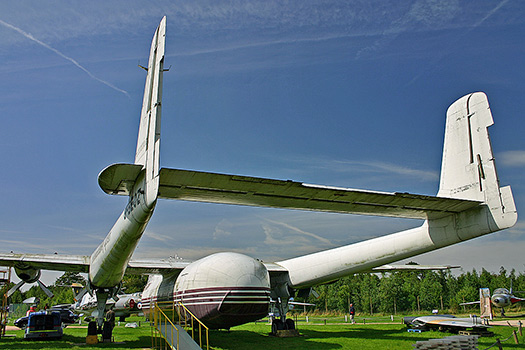 The military variant,
the Argosy C1, was more
successful. After evaluation the RAF ordered 20 aircraft, but wanted a
number of alterations to the type. This included a strengthened wing and more
powerful Dart 101 turboprop engines. The aircraft had only a rear cargo door,
with an integral loading ramp, that could be
opened in flight (the civil version could not). The nose door was “sealed” to
take a weather radar radome and two doors were fitted on the starboard side to
enable paratroopers to exit. The strong tricycle landing gear of the original
design was retained to allow take-off and landing on rough terrain. The military prototype first
flew on 4th March 1961, about 27 months behind its civilian
counterpart, and the RAF eventually acquired 56 aircraft. The first Argosy C1s entered service in
1962 with 105 Squadron in the Middle East and 114 and 267 Squadrons at RAF
Benson and soon became known as the 'whistling wheelbarrow'
- a product of the aircraft shape and the characteristic sound of the Dart
engine. Later on in 1963 C1s were deployed to the Far East when 215 Squadron,
based at RAF Changi, Singapore, was re-equipped with them. 215 Squadron was
disbanded on New Years Eve 1967 and its aircraft went to 70 Squadron at RAF Akrotiri, Cyprus. This was the last squadron to operate the aircraft when it
disposed of them in February 1975 when it was re-equipped with the Lockheed
Hercules. The aircraft was used for freight, troop transporting and parachute work. It could accommodate 69 troops, or 48 stretcher cases or 29000lbs (13154kg) of
freight. The freight load could include a Saracen armoured car, 105mm
Howitzer, Wombat anti-tank gun and Ferret Scout car. Later seven aircraft being modified to
E1 standard
and was flown by 115 Squadron from 1968 to 1978 [replaced by the Hawker Siddeley
Andover] who was based, for most the
time, at RAF Cottesmore). These aircraft were used to
calibrate airfield navigation aids.
XP411 (see below) was modified as a
Argosy T1
and was used for crew familiarisation and conversion training
at RAF Finningley pending the anticipated delivery of
Argosy T2 aircraft, which were cancelled due to defence cuts in 1975.
Three aircraft, XP442, XP447 and XR136 were converted to T2 standard.
These aircraft had navigation training consoles in the fuselage as well as an
additional flight engineers position and were to be used to train flight
engineers, navigators and loadmasters all at the same
time but the concept was not successful. The RAF retired the last of its aircraft from active duty in 1975
as an economic measure. After the removal of the Argosy C.1 from
the cargo/transport role it was decided to modify several aircraft as Navigation
Trainers for the RAF Training Command. In fact most
C1s were scrapped after being withdrawn from use, although five went onto civil use.
The military variant,
the Argosy C1, was more
successful. After evaluation the RAF ordered 20 aircraft, but wanted a
number of alterations to the type. This included a strengthened wing and more
powerful Dart 101 turboprop engines. The aircraft had only a rear cargo door,
with an integral loading ramp, that could be
opened in flight (the civil version could not). The nose door was “sealed” to
take a weather radar radome and two doors were fitted on the starboard side to
enable paratroopers to exit. The strong tricycle landing gear of the original
design was retained to allow take-off and landing on rough terrain. The military prototype first
flew on 4th March 1961, about 27 months behind its civilian
counterpart, and the RAF eventually acquired 56 aircraft. The first Argosy C1s entered service in
1962 with 105 Squadron in the Middle East and 114 and 267 Squadrons at RAF
Benson and soon became known as the 'whistling wheelbarrow'
- a product of the aircraft shape and the characteristic sound of the Dart
engine. Later on in 1963 C1s were deployed to the Far East when 215 Squadron,
based at RAF Changi, Singapore, was re-equipped with them. 215 Squadron was
disbanded on New Years Eve 1967 and its aircraft went to 70 Squadron at RAF Akrotiri, Cyprus. This was the last squadron to operate the aircraft when it
disposed of them in February 1975 when it was re-equipped with the Lockheed
Hercules. The aircraft was used for freight, troop transporting and parachute work. It could accommodate 69 troops, or 48 stretcher cases or 29000lbs (13154kg) of
freight. The freight load could include a Saracen armoured car, 105mm
Howitzer, Wombat anti-tank gun and Ferret Scout car. Later seven aircraft being modified to
E1 standard
and was flown by 115 Squadron from 1968 to 1978 [replaced by the Hawker Siddeley
Andover] who was based, for most the
time, at RAF Cottesmore). These aircraft were used to
calibrate airfield navigation aids.
XP411 (see below) was modified as a
Argosy T1
and was used for crew familiarisation and conversion training
at RAF Finningley pending the anticipated delivery of
Argosy T2 aircraft, which were cancelled due to defence cuts in 1975.
Three aircraft, XP442, XP447 and XR136 were converted to T2 standard.
These aircraft had navigation training consoles in the fuselage as well as an
additional flight engineers position and were to be used to train flight
engineers, navigators and loadmasters all at the same
time but the concept was not successful. The RAF retired the last of its aircraft from active duty in 1975
as an economic measure. After the removal of the Argosy C.1 from
the cargo/transport role it was decided to modify several aircraft as Navigation
Trainers for the RAF Training Command. In fact most
C1s were scrapped after being withdrawn from use, although five went onto civil use.
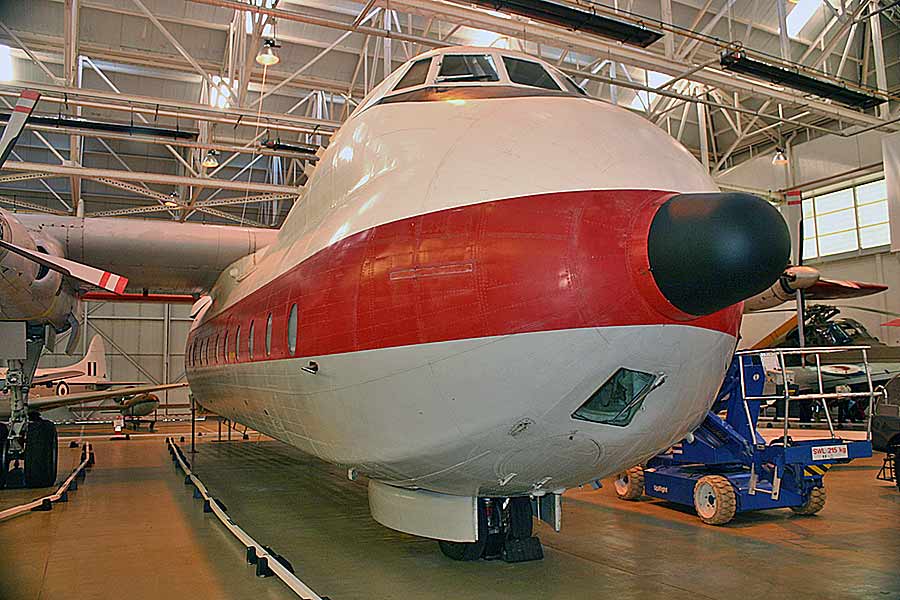
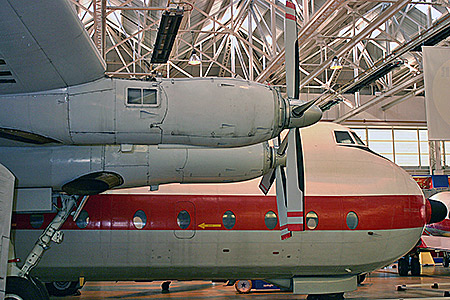

Armstrong-Whitworth Argosy C1/T1 (XP411) [@ RAF Cosford]
The first flight of XP411 was on 6th April 1962 and was delivered on 1st June 1962 to 105 Squadron at RAF Benson. On 13th August 1962 the Squadron moved to RAF Khormasker, Aden, to join Air Force Middle East. The unit moved to Britain in November 1967 before being disbanded on 1st February 1968, so on the 31st January 1968, XP411 was transferred to the 114/267 Squadron pool at RAF Benson. In April of that year HQ Maintenance Command allotted it to Hawker Siddeley Aircraft for trial work. It was released from these trials on 23rd April 1968 and returned to the 114/267 Squadron pool. On 7th July 1970 it joined 70 Squadron at RAF Akrotiri, Cyprus, but it soon returned to the UK and was placed in storage at 27 MU RAF Shawbury. In March 1972 XP411 moved to 5 MU at RAF Kemble. In March 1974 it went to 23 MU at RAF Aldergrove for overhaul and was repainted in the red/white colour scheme of training command, which is shown in the photograph. From there it went to 6 Flight Training School at RAF Finningley on the 8th October 1974 and re-designated Argosy T1. In this role it was used for crew familiarisation in anticipation of delivery of the Argosy T2s, but these did not go ahead and so it went 2 School of Technical Training at RAF Cosford on 22nd May 1975. In April 1988 it was transferred to the museum.
A further civil model was developed to try and attract interest in the type. The Series 200 featured a lighter redesigned wing, more powerful Dart 532 turboprop engines and an enlarged hold with wider front and rear cargo doors to enable it to carry standard size cargo pallets. The prototype was first flown on 11th March 1964. However, buyers were not forthcoming and although BEA ordered 10 only seven were built.